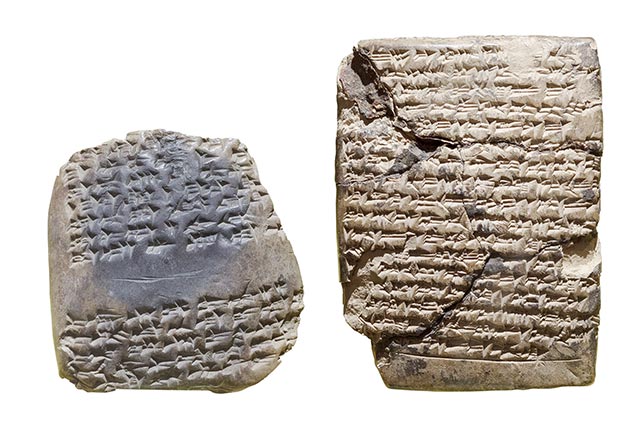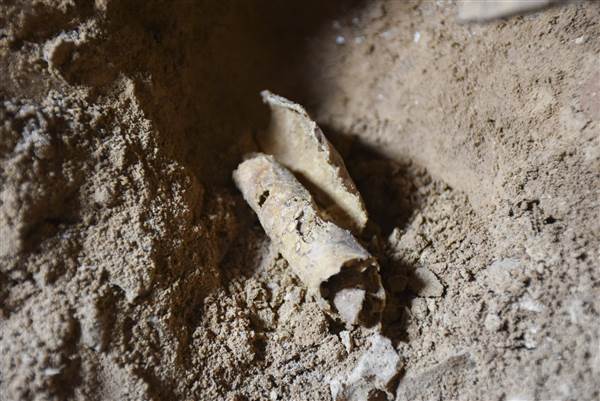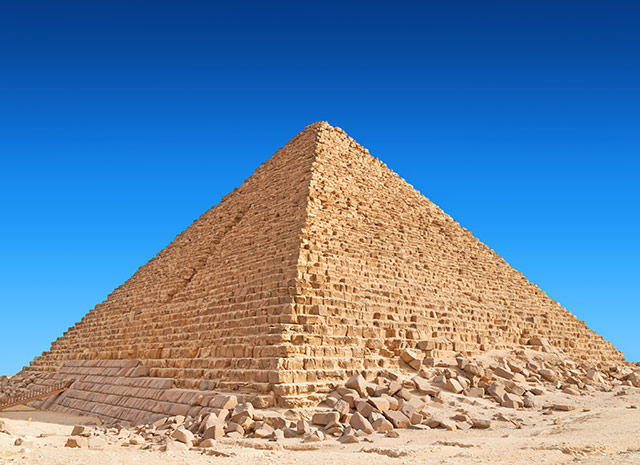Ancient tablet discovered on Mount Ebal in Nablus precedes known Hebrew inscriptions
05/22/2023 / By Kevin Hughes

A folded lead tablet first found in the 1980s at Mount Ebal in the West Bank had a secret text that preceded known Hebrew inscriptions.
The tablet was inadvertently disturbed during diggings performed by Adam Zertal, a controversial archaeologist from the University of Haifa (UH) in Israel, back in 1982. Like almost all diggings, Zertal left behind piles of unearthed soil following his discovery of two altars on the mountain. One of the piles dubbed as the “east dump” apparently held the tablet that was rediscovered 37 years later.
Wet sifting on the soil at the east dump in December 2019 yielded the folded tablet, which originated from one of the altars. Dents blemished its outside, and the tablet could not be opened without damaging it.
Given this restriction, a team of scientists from Israel and Europe performed X-ray tomographic measurements to show what was written on the tablet. They found the Hebrew inscription written during the late Bronze Age, preceding any earlier known Hebrew inscription in Israel by at least 200 years. (Related: Scientists uncover “invisible” ancient Hebrew inscription that can only be seen with advanced technology.)
But the writing did not pertain to any statement of the time. Instead, the Hebrew inscription etched on the lead tablet was a malediction.
“You are cursed by the God YWH, cursed. You will die, cursed – cursed, you will surely die. Cursed you are by YHW – cursed,” the tablet’s inscriptions read.
Curses on the tablet appear to line up with Biblical tradition
The curses on the tablet appear to line up with Biblical tradition mandated by God after the Israelites left slavery in Egypt. Two books of the Old Testament directly mention Mount Ebal, where the lead tablet was found.
The book of Deuteronomy states: “When the Lord your God has brought you into the land you are entering to possess, you are to proclaim on Mount Gerizim the blessings, and on Mount Ebal the curses.” (Deuteronomy 11:29)
Meanwhile, the book of Joshua explicitly mentions the building of the altar on Mount Ebal – as part of the Israelites’ renewal of their covenant with God. Zertal would later uncover this altar thousands of years later.
“Joshua built on Mount Ebal an altar to the Lord, the God of Israel, as Moses the servant of the Lord had commanded the Israelites. He built it according to what is written in the Book of the Law of Moses – an altar of uncut stones, on which no iron tool had been used.” (Joshua 8:30-31)
According to the researchers, the use of the term YHW – a shortened version of the divine name Yahweh – clearly points to the inscriptions as ancient Hebrew. This is because it references the name of the Lord first used in ancient Israel. They also noted that the tablet is a type of legal text, which threatens curses upon individuals who transgress a covenant.
UH’s Gershon Galil, one of the team members involved in the research, said all 48 letters on the tablet are clear. While he believes the inscription dates back to the end of the 13th century B.C., his co-authors believe it could be older.
“The scribe that wrote this ancient text, believe me – he could write every chapter in the Bible,” Galil remarked.
Follow Artifacts.news for more stories like this.
Watch this video that discusses the folded lead tablet found on Mount Ebal.
This video is from the Gibraltar The Rock channel on Brighteon.com.
More related stories:
Ancient potsherd inscription may be the missing link in the alphabet’s history, researchers suggest.
Experts say oldest, most complete Hebrew Bible could sell for $50M.
Sources include:
Submit a correction >>
Tagged Under:
Adam Zertal, ancient history, ancients, Archaeology, artifacts, breakthrough, curse, discoveries, folded tablet, Hebrew inscriptions, Hidden History, Mount Ebal, Old Testament, real history, stone altars, West Bank
This article may contain statements that reflect the opinion of the author
RECENT NEWS & ARTICLES
COPYRIGHT © 2018 REALHISTORY.NEWS
All content posted on this site is protected under Free Speech. RealHistory.news is not responsible for content written by contributing authors. The information on this site is provided for educational and entertainment purposes only. It is not intended as a substitute for professional advice of any kind. RealHistory.news assumes no responsibility for the use or misuse of this material. All trademarks, registered trademarks and service marks mentioned on this site are the property of their respective owners.


















